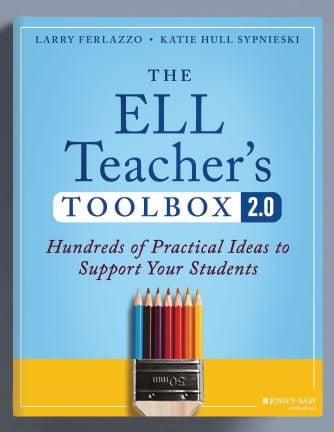Key points:
Student data only matters when we turn it into action
Personalized Learning: eSN Innovation Roundtable
5 educators share insights into teaching and learning
For more news on data-informed instruction, visit eSN’s Innovative Teaching hub
For years now, many people have used wearable technology such as the Fitbit or Apple Watch to understand data about their health–their heart rate, for example, or their total steps per day. This is in recognition that these numbers tell them something foundational about their overall well-being. Something so important, it deserves real-time tracking.
What if we could do the same thing in education? One of the best ways to improve student outcomes is to take a “Fitbit approach” to tracking, and bolstering, performance on key learning metrics.
Building on teacher intuition
Teachers are an intuitive bunch. They know their students well, and they have a good idea of where students are succeeding and where they need support.
In the classroom each day, teachers are constantly using an array of information about student learning–including their own insights, the knowledge of the student’s past performance, and their predictions about future performance–to provide the best possible instruction for each individual student.
However, there are limits to this process, even for the most talented educator. Typically, educators do not have access to the real-time data or point-in-time snapshots between assessments that could help them confirm, challenge, or adjust their instincts.
And by the time they do receive up-to-date information–for example, after the next assessment–it can be too late to help the student master that concept. (Something all of us who have been in the classroom have unfortunately experienced!)
Previously, there was no way to access this data without constant assessment that would get in the way of the actual work of teaching. Now, we do have technology that can support this, so teachers no longer have to simply do their best with a mixture of old data and hunches.
Ways teachers can use real-time data
Data only matters when we turn it into action. For a Fitbit user, this can mean things like glancing at a low step count and deciding to take a post-lunch walk. Over time, small decisions like this can lead to significant improvements in health.
In the classroom, this can function in much the same way, with real-time data driving a series of daily decisions about where students should focus their review and practice. A few ways teachers can turn real-time data into action include:
Validating their intuition and removing some of the cognitive load of their day-to-day work. Teachers already have enough on their plate without needing to spend significant mental energy developing their best guesses about each student’s performance in different areas. Real-time data can help free up this cognitive load so they can focus less on hunches and more on the real work of teaching.
Understanding which students are struggling and in which areas. Identifying students who are falling behind is one of a teacher’s most important tasks. Real-time data can help teachers do this earlier and more effectively–without waiting for a quiz or test–and then take action accordingly.
Offering each student differentiated instruction. Based on where students are exceeding expectations or falling behind, teachers can use this real-time data to provide differentiated instruction that will ensure each student gets the extra practice (or extra challenge) they need.
Remember, this wealth of data only becomes meaningful when it empowers students to do something in response to data insights. So make sure that whatever tool or program you’re using to gather data supports this process–for example, by automatically creating differentiated practice plans for students based on their current performance.
Real-time data in action
So, what does it look like in action when this sort of real-time data is used to support individualized practice? In October 2022, Summer Moring, a sixth-grade math teacher in the Allen Independent School District in Texas, began using a prototype version of a tool that gave her access to real-time data about student performance. The tool also provided personalized gamified practice for each student based on this data.
Throughout the 2022–2023 school year, Moring’s students used practice sessions as part of their unit reviews, state assessment preparation, and homework assignments. This included both optional solo practice activities, whole-class live practice sessions, and assigned low-stakes practice, based on student needs.
Moring appreciated how the tool allowed her to easily see each student’s performance and adjust assignments accordingly.
“I liked that I could click on specific practice sets that were assigned to each classroom and say, ‘Okay, this student is at this percentage, this student is at this percentage,’” Moring said. “Utilizing those, I would even reassign those practices sometimes and say, ‘Hey, let’s try to build this up a little bit.’”
Research has found that this kind of practice can lead to significant learning gains. In Moring’s case, her students grew from an average of 70 percent accuracy on their first attempt to 86 percent on their most recent attempt on standards-aligned practice items.
Toward a more inclusive classroom
If heart rates and number of steps per day are important enough for real-time tracking, the metrics crucial to driving student success are, too.
We should all be excited about a future where technology can foster a more inclusive classroom, ensuring that every teacher has access to the data that will empower them to help each of their students where they need it most, and where every student has the personalized support they need to thrive.
For years now, many people have used wearable technology such as the Fitbit or Apple Watch to understand data about their health–their heart rate, for example, or their total steps per day. This is in recognition that these numbers tell them something foundational about their overall well-being. Classroom Learning, eSchool Media, Featured on eSchool News, Innovative Teaching, Apple, best, data, day, Education, educators, IT, learning, student, teacher eSchool News






